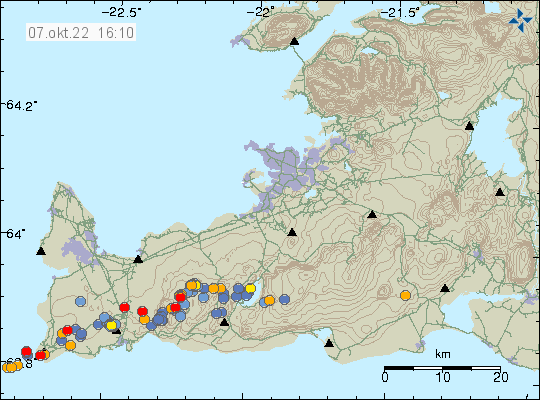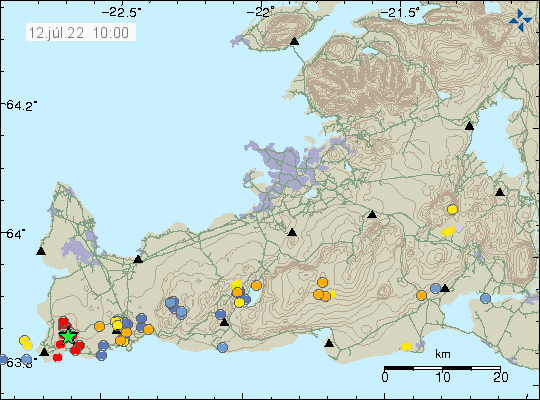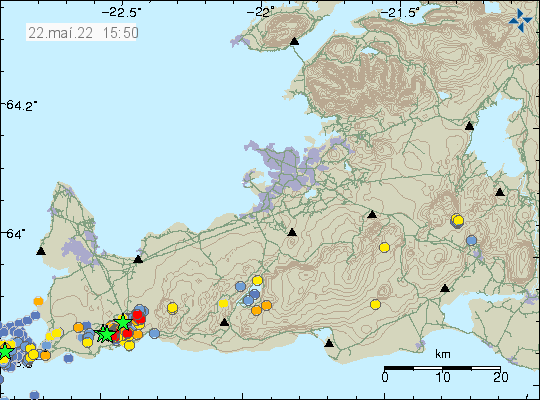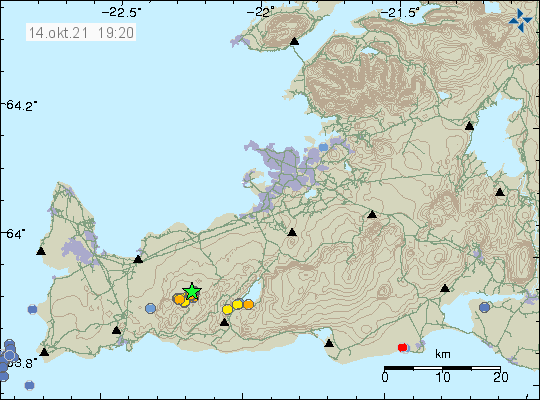Since yesterday (06-October-2022) the earthquake activity has been increasing in the volcanoes Fagradalsfjall and Reykjanes volcanoes. Please note that Global Volcanism Program has updated the informations regarding Fagradalsfjall mountain and now classifies it as its own volcano, this is after a new report and information from Icelandic Met Office. From now on I am going to use that classification when updating on activity in Fagradalsfjall volcano. I’ll not update older articles (too much work), but this also applies to them as such.
This also means that Fagradalsfjall is a new volcano in Iceland.

Earthquake activity at start of an eruption cycle in Fagraldsfjall volcano are not large. They grow larger once magma has started to push into the crust, until then the earthquake activity only seems to happens with minor earthquake swarms.
Article updated with new information.
Donations
Please remember to support my work with donations. This month I am really broke. Thanks for the support. 🙂






